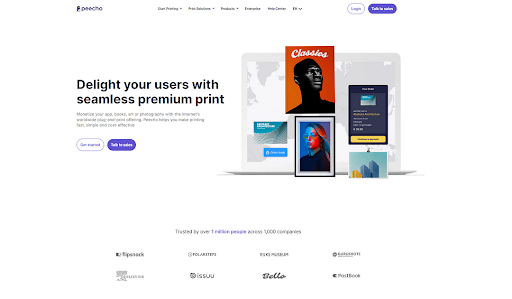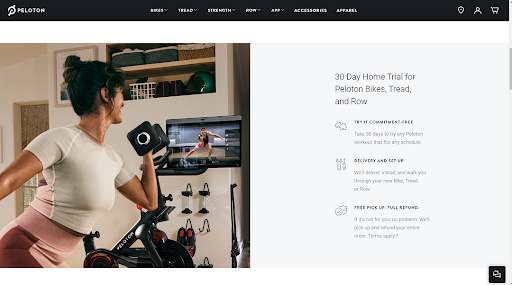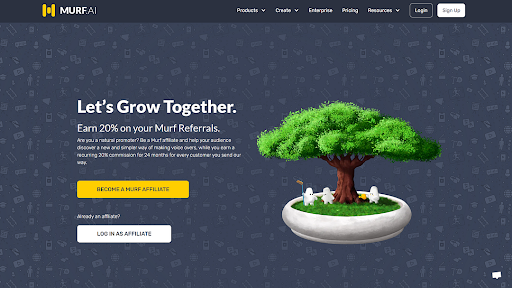Maybe it's just me, but I've noticed that some product managers get weirdly possessive over their customers. In some extreme examples, I've seen PMs take churn personally—as if the customers left because of some vendetta against the product team. Of course, the (even harsher) truth is that your customers probably don’t know or care that you exist.
Though it's easy for PMs and development teams to get “high on our own supply” when we're living and breathing our products, the fact is that customers are reluctant to part with what they already know and have. The result is a nine-to-one mismatch between what innovators believe consumers need and what customers actually want. It is called the 9x effect.
Mixpanel’s product benchmark 2019 report puts it this way:
As SaaS continues to eat the world, very few products can turn casual users into active ones.
According to the same report, the gap between the average and the best products is getting wider—products in the 90th percentile grow 18X faster than average.
So, if you had one shot, or one opportunity to seize all customers you ever wanted, in one moment—would you do it, or just let it slip? Would you nail product adoption, or would you choke?

In this article, I will help you understand what product adoption is, how to measure it, and help you troubleshoot common barriers to product adoption.
Get ready to lose yourself in some product adoption cheat codes.
What Is Product Adoption?
I still get sweaty palms each and every time the product teams are about to ship a new feature from the product roadmap. My mind replays everything I've done leading up to the release and I start to second-guess all of it.
"Did we understand the problem well enough from user research?"
"Did we define, design, and validate the optimal solution?"
"Will they be interested and able to find it?"
"Will they understand it, and want to use it again and again?"
"Will customers adopt this?"
Well, the proof is in the pudding. And just as making pudding requires the right ingredients, product adoption also requires the right components.
The product adoption process begins with creating awareness and piquing interest in the new product, such as through marketing campaigns or in-app messaging. When done well, after careful evaluation, it leads to the end-user trying it out. In turn, the user ultimately makes the decision to adopt it, advocate for it, or reject it.

How To Measure Product Adoption
So how do you know your feature is a triumph and not a comedy of errors? In simple terms, it’s when users stick around. How do you know if they are? Well, the path to knowledge is paved with measurement.
It is by defining key performance indicators critical to success and putting relevant metrics in place. High-level, this means understanding the percentage of new users that converted in each step of the funnel using relevant KPIs and product adoption metrics in each of them.
To measure the Awareness, Interest, and Evaluation stages, you could look at:
- Website traffic
- Social media engagement
- Search volumes
- Brand mentions
- Market surveys
- Email opens and click-through rates
- Referral traffic
For Trial and Adoption stages, think about measuring:
- Conversion rate
- Activation rate
- User engagement*
- Customer retention rates
- Churn rates
- Customer feedback.
To measure and evaluate Advocacy, look at:
- Referral rates
- Net Promoter Score (NPS)
- Customer Loyalty
- Customer Satisfaction
- Social media mentions
If you want to make it easy on yourself, outstanding product adoption software is your best friend.
Troubleshooting Common Barriers To Product Adoption
I recall when my first feature shipped—I was 110% convinced all potential end-users would fall in love with it. I expected no less than a 100% user adoption rate. It would be a guaranteed adoption slam dunk.
Needless to say, I was off...far off. I was extremely disappointed, believing it was an absolute failure. But, as I've come to learn, failures are just part of the job and every failure comes with a lesson.
Let’s have a look at the common barriers of each product adoption stage and how to troubleshoot them.
For experience and motivation purposes, I've even put together The Ultimate Product Adoption Playlist to pump you up for the long road ahead.
Barrier 1: Limited Brand Recognition
I can't get people to notice my product
and trust my company.
This has to be the number one thought of any founder or product manager working in a start-up launching a new product.
As an explodingtopics.com study found, 81% of consumers need to trust a brand to consider buying from it.
Brand recognition grows over time, but your budget may be limiting for what you can achieve in the meantime. Moreover, increasing brand recognition might not be your strength.
What should you do?
Fix: Smart Marketing
Overcoming limited brand recognition can be challenging. Assuming that you already nailed a clear and compelling brand identity, know your ideal customer profiles, and have a unique selling proposition, here are two strategies that can help you overcome this barrier.
Build partnerships
Better together is my mantra. Partner with vendors, influencers, and thought leaders to showcase your product and reach a wider audience. Their endorsement and support can lend credibility and visibility to your brand.
In my experience, especially in partnerships with vendors, product managers play a big role. Think about build vs buy trade-offs, or working with indirect competitors whose products are complementary to yours.
It’s up to you how you build partnerships. An interesting example (albeit an ethical gray area) is the partnership between Airbnb and Craigslist, which you can read all about in this article on Hackernoon.
Leverage social proof
Use customer testimonials, case studies, social proofs and reviews to demonstrate the value and effectiveness of your product.
Showcase the positive experiences and outcomes of existing customers to build trust and credibility with potential customers.

Barrier 2: Lack Of Product Awareness
Even when your ideal customers recognize the brand, there is a good chance they don’t know about the new product or feature you are introducing. For that matter, I am betting most product managers have released a feature and—weeks or months later—heard from customers that they were unaware of the new feature.
This proves the importance of finding the right (personalized) communication at the right time to engage with your end user.
Fix: Lure & Hook
Fishing analogies aren't usually my style, but the best way I can simplify this strategy is to imagine you're a fisherman and the fish are users. First, you need to make sure your new product or feature is somewhere the fish will see it, and then you need some enticing bait to get them to bite.
Increase visibility
Visibility is essential for your new feature to gain traction. An excellent go-to-market strategy forms the foundation.
You can increase the visibility of your product through targeted marketing efforts, such as online advertising, social media, email marketing, in-app notifications, and content marketing. Use search engine optimization (SEO) and search engine marketing (SEM) to make your product more discoverable on search engines.
A personal favorite is the go-to-market strategy of Cards Against Humanity. In 2013 they ran a Black Friday Campaign where they offered their game for $5 more than the regular price. And it worked. If you think it was a one-time thing, think again.

Offer incentives
Maybe I'm just partial to this tactic as a Dutchie (there's truth to the saying “going Dutch”), but offering discounts, free trials, or other incentives is a really effective way to encourage customers to try your product.
We all love incentives.
They help reduce the risk and uncertainty associated with trying your product. SmartBug media wrote an absolutely bang-on, insightful, and inspirational article worth reading when considering customer incentives.
It is crucial to remind yourself not to disregard your existing customers when offering incentives. Studies show that there is a 5–20% chance of selling to a potential customer, whereas for existing customers the chance is 60–70%.

Barrier 3: Failure To Understand The Perceived Value
Why don’t they see how beneficial this new feature in our SaaS product is for them, you lament as you sigh into your Friday evening beer. Cheers, my friend—I've been there too.
It’s a brain-breaker. You have done your user research, tested the new product, and all pointed to it becoming a monumental success. Reality is not turning out as anticipated.
Even when customers are trialing your new product, they abandon it before they can gain any value.
Though the willingness to try and realize the value of your product is different for each person, end-users typically spend less than 40 seconds on a product screen before deciding whether to continue using it or not. This is a very short time-to-value, and it highlights the importance of making the value of the feature clear and easy to understand—immediately.
Fix: Be a Customer Anthropologist
An anthropologist is someone who studies the behaviors of human beings—their habits, their cultures, and the context around the decisions they make. This is exactly the frame of mind to adopt when you're trying to understand perceived value.
Harness the power of a behavioral model
When I say "immediately," I really mean it. If your goal for time-to-value is something vague like "as quickly as possible," you need to set much more ambitious goals.
I love BJ Fogg’s behavioral model. It shows how Motivation, Ability, and a Prompt are needed to trigger behavior. The model makes it easier to understand user behavior in general. It helps put “quickly” in perspective, allowing you to invest the right amount of effort and resources to improve value generation for your customers.
Observe and learn
With the behavioral model in your back pocket, observe and learn from customer behavior. Have a clear understanding of the product and its specific features. Measure how customers use them, when they experience their time-to-first-value moments, and where they feel irritation or even drop off.
There's a whole category of user behavior analytics tools that can help you to analyze your data and think up solutions to increase your adoption rate. For instance, you could find that customers need a longer trial or evaluation period, require additional features or functionality, need you to turn your minimum viable product (MVP) into a minimum lovable product (MLP), or would appreciate demonstrations and videos to assist the user onboarding.
Barrier 4: Poor User Onboarding Experience
If the product experience is as good as a chocolate teapot, high adoption rates will forever be a dream.
The return on investment (ROI) of User Experience (UX) is a whopping 9,900%. Let that sink in.
Now, what others perceive as an outstanding user experience is going to vary from person to person. Generally, however, measuring user experience is done using qualitative measures, asking for customer feedback, or through conversations with customer success and sales teams. This approach might satisfy a very average PM—but I think you can do better than that.
So, how do you evolve the user experience to increase the product adoption rate?
Fix: Simplify, Simplify, Simplify
There are two main ingredients to excellent UX: clarity and simplicity.
Provide clear and concise instructions
Clear and concise instructions throughout the onboarding process help users understand how to use the product effectively. Providing tooltips, walkthroughs, and tutorials eases them to get started and reduces friction and frustration.
Define your onboarding process and onboarding flow and map out the experience expected throughout each step. Implement, measure, and follow up where needed.
For example, check out the Soundsuit app's onboarding experience.
Simplify the user interface
A cluttered or confusing user interface can be a major barrier to adoption. Consider the artistic principle of "negative space"—sometimes what you don't show makes all the difference for increasing feature adoption.
Try simplifying the user interface by removing unnecessary features, streamlining workflows, and improving navigation to make the product easier to use.
How do you know what to cut and what to keep? You guessed it—by observing interactions with the product, identifying pain points, and implementing usability improvements to remove them.
A process that I found helpful is Define, Measure, Analyze, Improve, and Control (DMAIC). It walks you through the process of identifying pain points, analyzing them, eliminating their root cause, and subsequently validating if you pulled it off succesfully.
Barrier 5: Misguided Support Strategy
You want to make sure your customer uses your product as it is intended and encourage and support them along their journey to extract value. What happens, though, is that your product adoption software tells you that customers churn quicker than a shooting star fades away, and your feature's best metric is in producing rage clicks.
Fix: Support, Don't Smother
In product-led SaaS companies, self-service is the main priority. Customers like to explore and try and feel like the king of their castle. Customer support should be truly supportive—it should never overstay its welcome.
Offer personalized support
Providing personalized support assists users to overcome challenges and build confidence.
Consider A/B testing or multivariate testing to see which solution resonates most with what type of user.
Consider offering chatbot support. Offer it to customers when a specific behavior, like rage clicking, is observed during their journey. It helps to be there at the right time, for the right reasons.
Know when to include product tours and notifications
It is bad practice to have product tours in every feature you introduce and spam active users with peripheral messages (that’s a fancy way of saying "notifications") ad nauseum.
Even when executed with good intent, this approach is intrusive and annoying.
Providing the right amount, for the right purpose and with an appealing design is a balancing act that pays off.
Barrier 6: Insufficient Motivation
It's lazy to think that product adoption stops at getting the customer to use your product frequently. It isn’t over until it’s over. True product adoption happens when customers actively champion your product, praise you, and help you expand your user base.
It is also the trickiest part. As Philip Graves mentions in an Oracle report, dogs are loyal, customers aren’t.
Fix: Reward Your Advocates
One thing dogs and customers do have in common is they both love being rewarded.
Engage with early adopters
Early adopters are those in the product adoption lifecycle curve, who are quick to try out your new products. They are instrumental in promoting your product to their networks and swaying the early majority to try your product for the first time.
Engage with them through social media, events, and other channels, and encourage them to share their experiences with others.
Embrace referral programs
To sweeten the deal, especially for early adopters, consider introducing a referral program. These are programs that incentivize customers to bring in new customers.
Typically a unique referral link or code is used for these practices, which provides those signing up using the link or code with a discount and the referrer with a reward.

What Does Successful Product Adoption Look Like?
These are just a few key obstacles you can come across whilst improving your product adoption rate throughout the product adoption curve.
There are lots and lots more. When encountering any product adoption obstacle (adoptstacle?), ask yourself:
- What is happening in the process?
- Why is it happening?
- What were my expectations?
- How can we quickly validate our understanding and define improvement options?
- What improvements could we implement?
- Which metrics should we measure to validate the effectiveness of these improvements?
Just like most things in life, it’s all about the process, and specifically about defining the most suitable adoption strategy for your product and audience—and that, my friend, is a path you'll have to forge for yourself.
Enjoyed this article? Get more expert insights and product management resources delivered to your inbox by subscribing to our newsletter.



